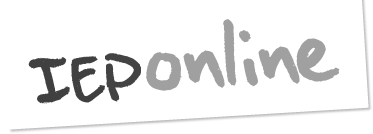RTLB and the IEP process – transcript
[On the screen]
Julie John, Resource Teacher: Learning and Behaviour (RTLB) explains the role of the RTLB in the IEP process.
RTLB’s are able to support students, teachers, schools and family/whānau to understand the important role each team member has in ensuring a successful IEP process.
Julie:
The RTLB works collaboratively in school settings to meet the needs of students. So Collaboration for Success is actually at the heart of what we do.
The RTLB has a role to enhance teacher capability, and this may be around the IEP process, or it may be around supporting the teacher to embed the goals into the curriculum for that student.
The RTLB also has a role in school capability, and it may be, especially as we move and change over the next few years with inclusion, that the RTLB may be involved in supporting the school in the IEP process and fully understanding Collaboration for Success. That doesn’t mean that the RTLB owns the process, but it may be that in the early stages they model what it might look like. They may work alongside the school SENCO, they might work alongside a group of teachers, or a syndicate, or the whole staff.
It may be that they are asked to work with a group of teachers and review IEP Online or merely exchange information that is available on IEP Online.
There are likely to be some challenges for schools, and that’s where the RTLB can lend support. I’m thinking, in particular, templates for IEPs – some schools used to have one template for many years, and a one-size-fits-all approach. There is scope in Collaboration for Success to do it differently to meet student needs.
Some schools might find the new or suggested template on IEP Online a little difficult in the beginning, and that’s where a RTLB could perhaps model how that can be used, how it can be changed, how it can suit various learners.
Of course, we are used to having an IEP in a written format.
Collaboration for Success talks about different ways of recording IEP goals.
It may be that we can facilitate student voice by thinking a little bit outside the square and thinking, “What will work? How can we hear the student?” and maybe the goals are taped, maybe they are recorded, maybe large pieces of paper are used.
There are a variety of ways of reviewing the IEP process and the summary of goals and where we’re headed.
We just don’t want to hear student voice, we actually want the IEP to be meaningful for the student, and that might mean thinking a little bit about what that might look like in terms of a student assessing their own goals.
A student using assistive technology, for example, might like to record or see that recorded on the computer or through Clicker 5, for example. Or another way of doing this would be to have some visuals. And we know a lot of students respond and can recall information if it’s supported well by visuals.
We must remember, “To hear student voice in an IEP” does not necessarily mean “have the student come into a meeting with many people sitting around a table”. That’s quite daunting for students.
The RTLB can facilitate having student involvement in other ways. The RTLB can set the student up for success in the IEP process. That might involve having an interview with them prior to the IEP and asking them about their interests, asking them what their goals are and where they’re headed.
In that way, student voice can be heard without the student necessarily being there.
We need to think, “How can we do this collaboratively? How can we set the student up for success?”
« Back to RTLB and the IEP process

